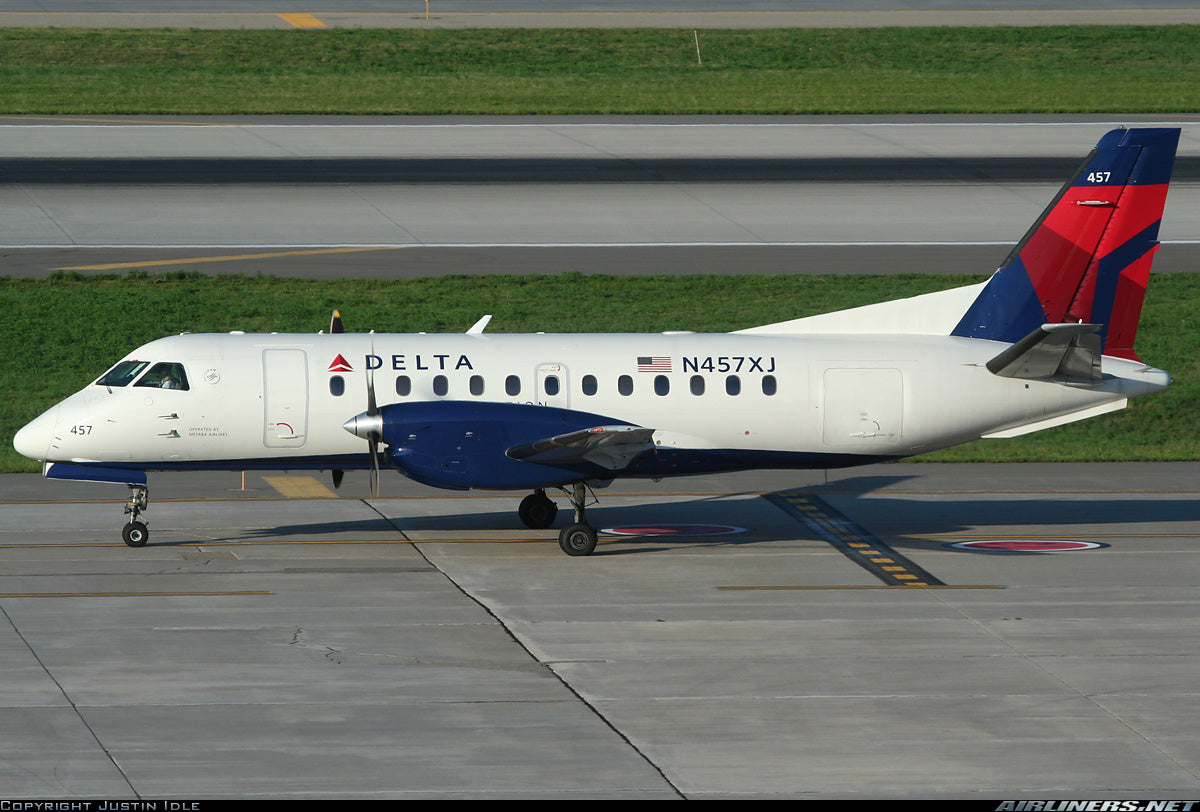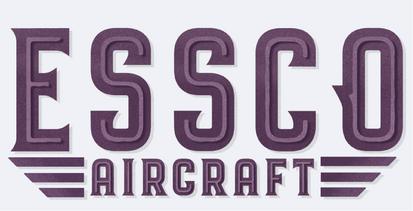
Number 55 of 100 in 100, the Saab 340 ✈️
Conceptualization:
The Saab 340 was developed in response to the evolving aviation market of the late 1970s and early 1980s. During this period, regional airlines were looking for aircraft that could efficiently operate short-haul routes while keeping fuel and maintenance costs low. The industry saw a need for an alternative to older, less efficient models like the Fokker F27 and Fairchild Metroliner. Saab collaborated with Fairchild, leveraging Saab’s expertise in aerodynamics and Fairchild’s experience in manufacturing. This partnership aimed to develop a 30 to 40 seat aircraft that would provide better fuel efficiency, performance, and reliability, meeting the demands of regional airlines that were expanding their services to smaller airports with shorter runways. With these goals in mind, the Saab 340 emerged as a regional turboprop aircraft designed to fill a critical gap in the market.
Original Design:
The Saab 340's design was tailored to meet the operational needs of regional airlines and short-haul routes. The aircraft was powered by two General Electric CT7-5A2 turboprop engines, giving it a balance of fuel efficiency and performance. A pressurized cabin provided a comfortable experience for passengers, while the simple cockpit layout and modern avionics made it easier for pilots to operate. Designed with rugged landing gear and a focus on easy maintenance, the Saab 340 became known for its reliability and ability to operate in a wide variety of conditions. The aircraft's versatility and attention to operational efficiency ensured that it could serve regional airlines effectively.

Photo Credit: airliners.net - Chung Kwok
Principal Designer:
The Saab 340 was a collaborative effort between Saab AB and Fairchild Aircraft, with Saab taking the lead on aerodynamics and structure, and Fairchild contributing to avionics and manufacturing. Saab’s engineering expertise came from its military background, including projects like the Saab 35 Draken and Saab 37 Viggen. When Fairchild exited the partnership in 1985, Saab took over full control of the project, applying its military-grade design principles to create a robust and reliable commercial aircraft.
Production Run:
The Saab 340 was in production from 1983 until 1999, during which a total of 459 units were manufactured. The production run started strong with demand from regional airlines for a reliable, fuel-efficient turboprop. By the late 1990s, however, competition from regional jets such as the Bombardier CRJ and Embraer ERJ began to cut into the market for turboprops, leading to a slowdown in production. Despite this, the aircraft remained popular in niche markets due to its operating efficiency and durability, and many are still in service today, particularly in roles like cargo transport and charter operations.
Evolution:
Throughout its production, the Saab 340 evolved significantly. The initial model, the Saab 340A, was followed by the 340B, which featured more powerful General Electric CT7-9B engines, improved takeoff performance, and a higher maximum takeoff weight. In 1994, the 340B Plus was introduced, offering better soundproofing and an enhanced cabin design for improved passenger comfort. These upgrades allowed the Saab 340 to stay competitive even as the regional aviation market shifted toward jets. Special variants like the Saab 340 AEW&C (airborne early warning and control) were developed for military purposes, further demonstrating the aircraft’s versatility.

Photo Credit: airliners.net - Gary Chambers
Specifications:
Saab 340B Specifications:
General characteristics
- Crew: 2 pilots
- Capacity: 34 passengers, Maximum payload : 7500 lb / 3400 kg
- Length: 19.73 m (64 ft 9 in)
- Wingspan: 21.44 m (70 ft 4 in)
- Height: 6.97 m (22 ft 10 in)
- Wing area: 41.81 m2 (450.0 sq ft)
- Airfoil: root: NASA MS(1)-0316; tip: NASA MS(1)-0312
- Empty weight: 8,618 kg (19,000 lb) average operational empty weight
- Max takeoff weight: 13,154 kg (29,000 lb) , increased to 30,000 pounds for 340B models by SAAB Service Bulletin (SB) 340-51-033 with Modification Number 3655
- Fuel capacity: 5690 lb / 2580 kg
- Powerplant: 2 ×General Electric CT7-9B turboprop engines, 1,390 kW (1,870 shp) each for take-off (ISA, APR)
- Propellers: 4-bladed Hamilton Standard 14RF19 (or Dowty Rotol), 3.35 m (11 ft 0 in) diameter four-blade constant speed, fully-feathering reversible propellers
Performance
- Cruise speed: 524 km/h (326 mph, 283 kn)
- Range: 1,350 km (840 mi, 730 nmi) long range cruise with 34 passengers and baggage
- Service ceiling: 7,620 m (25,000 ft)
- Rate of climb: 10.2 m/s (2,010 ft/min)
- Fuel consumption: 0.94 kg/km (3.3 lb/mi)
- Take-off distance: 4220 ft / 1285 m
Comparison to Other Aircraft in its Class:
The Saab 340 was often compared to other regional turboprops like the de Havilland Dash 8-100 and the ATR 42. The Dash 8-100, with a capacity of up to 37 passengers, had a higher MTOW (34,500 lb) and slightly better performance in harsh environments, but it was slower and less fuel-efficient than the Saab 340. The ATR 42, with a capacity of 42-50 passengers, had a shorter range (717 nautical miles compared to the Saab’s 730), making the Saab 340 more suited for longer regional routes. While the Saab 340 excelled in fuel efficiency, range, and passenger comfort—especially with its quieter 340B Plus model—it had a smaller passenger capacity (34 seats) than its competitors, which could be a disadvantage on high-demand routes. Although its speed was competitive for turboprops, the emergence of regional jets like the Bombardier CRJ posed a challenge, as jets offered faster speeds and greater range. Nonetheless, the Saab 340’s strong short-field performance and efficient design made it an attractive option for operators focusing on cost per seat mile and versatile operations.
Performance:
V-Speeds (Important Flight Speeds)
- V1 (Decision Speed): 110 to 120 knots (depending on weight and conditions)
- VR (Rotation Speed): 115 to 130 knots (depending on weight and conditions)
- V2 (Takeoff Safety Speed): 130 knots
- VREF (Landing Reference Speed): 115 knots (varies with weight)
- VNO (Maximum Structural Cruising Speed): 220 knots (calibrated airspeed)
- VNE (Never Exceed Speed): 250 knots
- VA (Maneuvering Speed): 175 knots
- VFE (Maximum Flap Extended Speed):
- Flaps 7°: 175 knots
- Flaps 15°: 165 knots
- Flaps 20°: 155 knots
- Flaps 35°: 140 knots
- VLO (Maximum Landing Gear Operating Speed): 175 knots
- VLE (Maximum Landing Gear Extended Speed): 200 knots
G-Load Limitations
- G Limits (Flaps Up): +2.8g to -1.0g
- G Limits (Flaps Down): +2.0g to 0g
Performance Assessment:
The Saab 340 excels in pilot training for multi-engine turboprop certification and regional airline preparation. Its twin-turboprop configuration and forgiving handling make it ideal for teaching engine-out procedures and systems management, while its avionics and flight envelope simulate larger airliner operations, providing valuable training experience. Additionally, the aircraft’s short-field performance is particularly useful for training in challenging environments, and it has found niche use in VIP or charter services where its range, comfort, and rugged design are valued.

Photo Credit: airliners.net - Vasiliy Koba
Safety Record:
One of the most common safety concerns with the Saab 340 was hull losses. Between 1983 and 2011, the Saab 340 experienced 10 hull-loss accidents, leading to 48 fatalities. The other most common concern involves weather-related challenges, such as icing, though the aircraft's anti-icing systems have generally performed well. Engine issues have been reported but are rare, and the aircraft's redundancy features ensure that it can safely handle an engine-out scenario. When compared to other aircraft in its class, like the ATR 42 or Dash 8, the Saab 340 holds up well, with a reputation for durability and safety in various operating conditions.
Acquisition Cost:
Originally, the Saab 340 had an acquisition cost of $10 million. Today, used Saab 340 aircraft can be purchased for around $6 to $10 million, depending on their condition, model variant, and hours flown. This is typical for aircraft that are no longer in production, but the Saab 340 continues to offer excellent value for operators looking for a reliable turboprop with relatively low operating costs.
Conclusion:
The Saab 340 remains an enduring workhorse in the regional turboprop market, known for its reliability, efficiency, and versatility. From its initial conception as a solution for regional airlines to its evolution through various models, the aircraft has proven adaptable to the changing needs of the aviation industry. While production ended in 1999, the Saab 340 continues to fly today, serving in passenger, cargo, and special mission roles around the world. Its strong safety record and efficient performance make it a standout choice for operators, and its legacy as a dependable regional aircraft endures.

Photo Credit: airliners.net - Li Junjie
Bibliography:
Federal Aviation Administration (FAA)
Essco Links:
